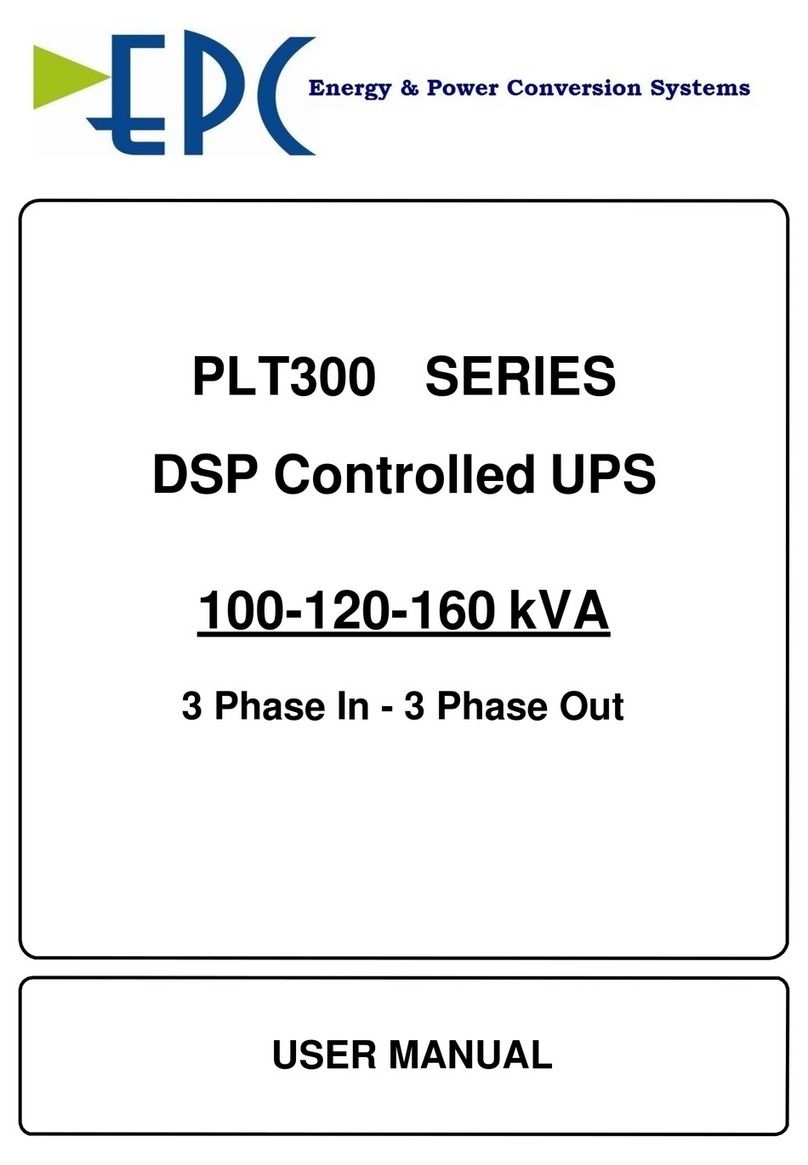
Ver1.0 Rev1 PAGE :
CAUTION
1. There are no user servicable parts inside.
2. Even after the equipment is disconnected from batteries, input and output
connections, a intervention to the interior of the equipment contains risk of
electric shock.
3. Ventilation holes should be kept open and no objects should be inserted.
4. In the environment where the equipment will be operated, the temperature and
humidity should be relevant.
5. Batteries should be kept away from high temperature, otherwise they can
explode.
6. The equipment can not be operated in an environment having flammable and
explosive devices.
7. Setup, maintenance and repair of the equipment should be performed only by
trained, experienced and authorised technical personnel.
8. When working on live equipment a second person who is aware of all safety
precautions and emergency actions should be present at all times.
9. It is the responsibility of each individual to be aware of national legislation,
local legislation and site rules governing safety and working practices.
10. Use only good quality insulated tools and accessories, properly maintained
and calibrated instruments, and suitable and adequate supports and lifting
equipment.
11. Electrical energy can be supplied from the AC supply, internal / external
batteries or the external alarm or auxiliary control terminals.




























